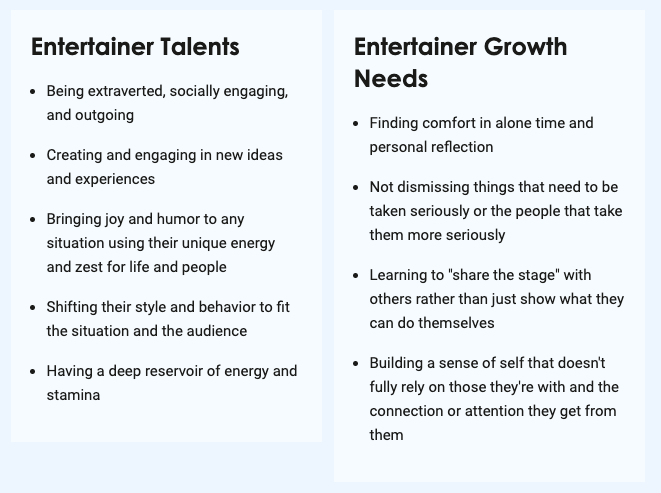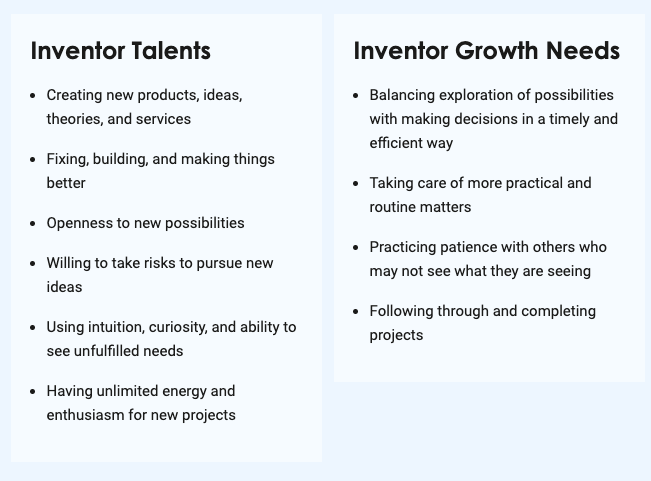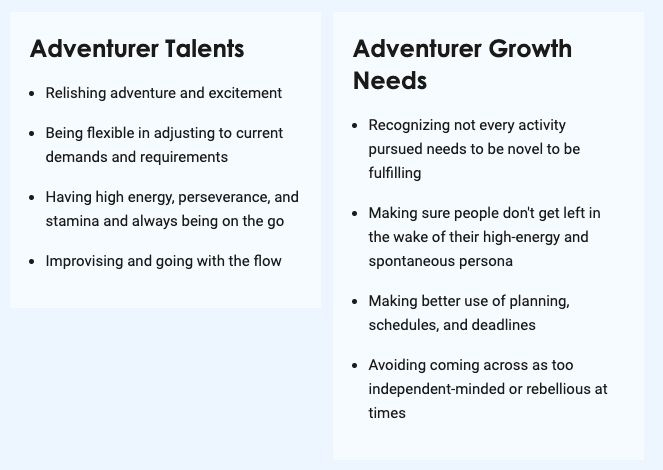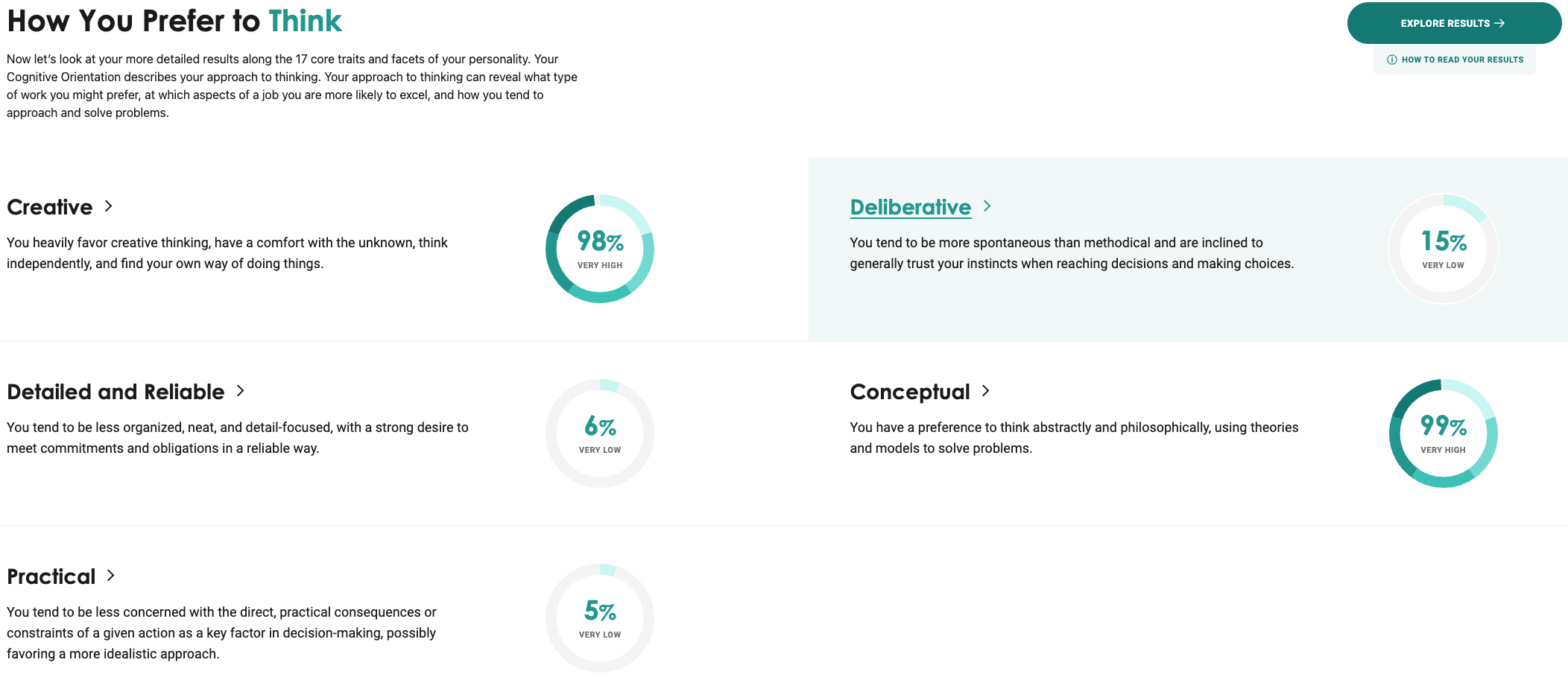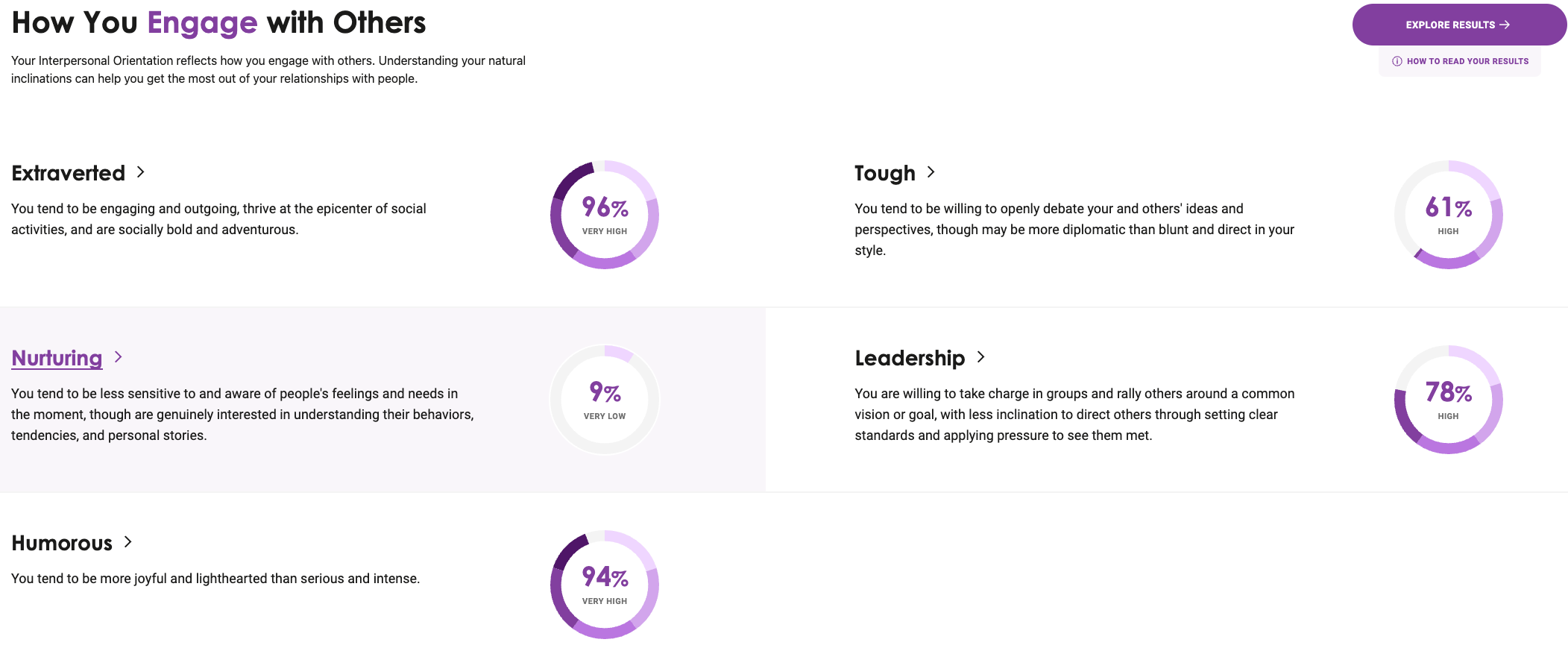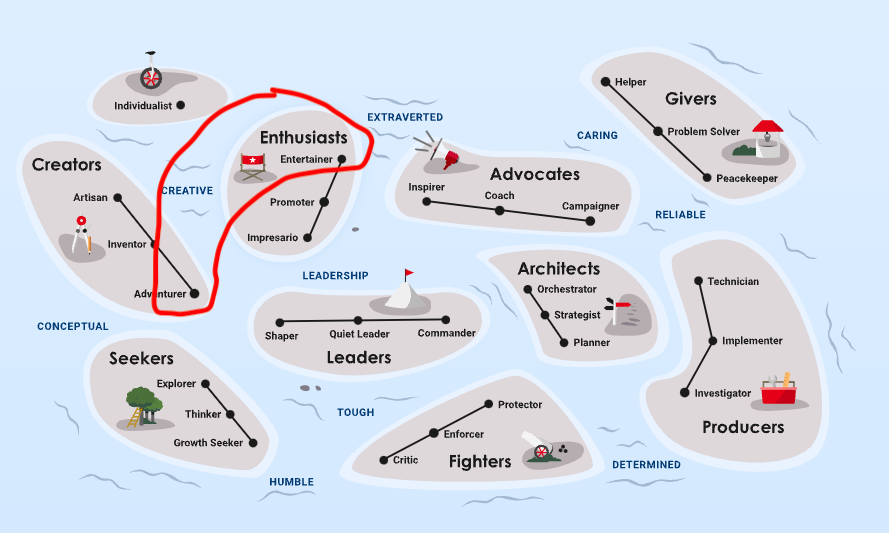Over the holidays this last week,i after getting a bit depressedii reading Ray Dalio’s new book – Principles for Dealing with the Changing World Order: Why Nations Succeed and Fail – I figured that if the ship’s going down, we might as well know ourselves a bit better on the way, so why not try Ray-Daddy’s home-grown personality assessment test! I’ve always been a big fan of Myers-Briggs et al. so why not try this PrinciplesYou thing, right?iii
So here are my results:
Where did these analyses miss the mark? I’m not actually super light-hearted, at least not in the hippie-surfer-dude sense; I’m not actually extraverted, more like an ambivert in my old age but really very introverted growing up; I don’t have a deep reservoir of energy and stamina, my constitution is much more like a high-maintenance Ferrari than a bring-it-on F-150; and I have no problem sharing the stage, in fact I typically deflect attention away from myself, mostly because I don’t want my social circle and peer group to feel lower than me on the totem pole. But other than that, there was a lot of value and accuracy in this assessment! It’s particularly interesting to consider these personalities as an archipelago, as seen just above on the map.
Needless to say, through this coming decade of crisis in the western world, with what Dalio perceives as a ~30% chance of second US Civil War and an additional ~30% chance of hot war between China and US, while I might have some aspirations as a “crypto-elite,” as we can clearly see from this assessment, I’m no leader and not even an architect. Thankfully, in every epoch, and arguably moreso on the way down than on the way up, there’s always need for enlightenment and entertainment. So here we are and here we’ll be.
See you next week!
___ ___ ___
- Happy 2022 y’all! I dunno about you guys but this past week was actually a great reminder why I’m still too young to handle retirement, or even sabbaticals, why I don’t just crypto-degen all day, and why I still maintain an existentially satisfying* if poorly remunerated day job: because left to my own devices, I go waaaaay too deep and waaaaay too dark. Something from my “only the paranoid survive” genetic ancestry is hyper-expressed under conditions of relative solitude and excessive self-determination. I like to joke that if I hadn’t found The Girl half-a-lifetime ago that I’d’ve ended up in a monastery, but a mental asylum is realistically just as probable.
___ ___
*The existential part probably doesn’t work how you think it does because you’re probably not as in touch with your artistic side as you could or should be, so here’s a hint: Oedipus. Still not clear? Allow Jack Burnham to clarify with this excerpt from his 1971 work, The Structure of Art:The cornerstone of [Duchamp’s] The Large Glass, and possibly all modern artistic creativity, appears to be the fable of Oedipus. As with all myths, the plot of Oedipus and the Sphinx varies from writer to writer. In its essential form Laius, King of Thebes, is warned by the Delphic oracle that he will suffer death at the hands of a future son, whom, when born, the king reluctantly orders given to a herdsman to be destroyed. The herdsman takes pity on the infant and leaves him alive, suspended from the branch of a tree. He is found and raised in the house of the King of Corinth as the monarch’s son, given the name Oedipus, or Swollen-foot. As a young man Oedipus exiles himself from Corinth when an oracle tells him that he will murder his father, whom he believes to be Polybus, King of Corinth. In his travels Oedipus encounters another chariot on the road and quarrels with its driver over the right of way. In provoked anger he slays the driver and a passenger who, unknown to Oedipus, is his true father, King Laius. Before the murder of Laius, the city of Thebes had been placed under siege by a fearful man-eater, a monster with the body of a winged lion and the face and breasts of a woman. Travelers to and from the city were challenged by this animal, called the Sphinx, to solve a riddle. And since no wayfarer had successfully answered her question, all were devoured. When Oedipus confronts the Sphinx and is asked, “What animal is that which in the morning goes on four feet, at noon on two, and in the evening upon three?” Oedipus answers, “Man. In childhood he creeps on hands and knees, in manhood walks erect, and in old age with the aid of a staff.” The answer is exactly right and this so demolishes the Sphinx that she commits suicide. In joyous appreciation, the citizens of Thebes crown Oedipus their king and award him with the hand of the widowed Queen Jocasta. Not only has the original prediction fulfilled itself, but Oedipus has also married his own mother. For many years the city of Thebes prospers and the royal pair produce two sons and two daughters. Eventually plague and famine descend. The city is near ruin when Oedipus is told by the oracle that to lift the curse he must find his father’s murderer. He then learns that he himself had committed the crime. Jocasta also learns the truth and commits suicide. Oedipus blinds himself and lives out his life as a wretched wanderer, cared for only by his daughters. In his Structural Anthropology Levi-Strauss treats the Oedipus myth as a four-part invention (1958, pp. 213-18). He divides the myth’s text (more extended than the above version) into four topical columns consisting of: overrated blood relations, underrated blood relations, denial of man’s autochthonous (unisexual) origins, and persistence of his autochthonous origins. The problem as Edmund Leach established it in his elegant analysis of the Biblical story of Genesis is that of “patrilineal descent: the requirement that fathers shall be perpetuated in their sons without the intervention of women, which in simple fact is plainly impossible” (Hayes and Hayes, p. 52). Myths, then, according to Leach’s interpretation of Levi-Strauss, reorganize reality along the lines of seemingly logical models. They evade biological truths by providing conceptual continuity between life as we would like to see it and the inevitability of reproduction, old age, and death. Levi-Strauss’s four columns represent such a mediation. Oedipus’s incestual marriage represents overrated blood relations, while the murder of his father represents underrated (or unhonored) blood relations. With the other two columns, it is less evident that the destruction of the Sphinx signifies a denial of man’s autochthonous origins, or that Oedipus’s lameness is the persistence of patrilineal descent. But approximating Leach’s diagram of the relationships established by Levi-Strauss, the connection between the columns becomes more obvious.
Oedipus assumes the honorable task of eliminating the Sphinx which in mythic form represents the fusion of his parents. According to Leach, “He accomplishes this end by sinning doubly—incest with Jocasta and patricide against Laius” (Hayes and Hayes, p. 52). Thus in Freudian terms how could the son take the father’s place with the mother except by literally replacing the father? In terms of genetics and chronology, not to speak of incest taboos, this is impossible; but in fact it occurs every time a son takes a wife and becomes a father himself. So in reality the myth mediates a time gap and also those psychological attachments between children and parents. The Sphinx then is Time and the persistence of genealogical ties. Oedipus is lame or “incomplete” because he can only assume the position of his father by becoming a father himself. Just as he is too close to his mother and desirous of his father’s death, the Sphinx assumes the over-completeness of hermaphroditic existence, and Oedipus the incompleteness of a man who has not replaced himself. As a biological paradigm, the Oedipus myth represents a key relationship in all evolutionary procedures involving human beings. In fact it regulates historical thought. Like Oedipus, each rising generation of history oriented artists is confronted with the ambivalent need to produce art as their predecessors did, yet create an art which is entirely new in style and esthetic conception. This exactly parallels Levi-Strauss’s juxtaposition of underrated and overrated blood relations. All young artists feel constrained by history to reject the styles of past artists; at the same time they are forced to create something which is structurally consistent with all former principles of art. For the artist the Sphinx is Art History, combining the enigma of over-attraction and over-rejection. Great artists—in the light of history—produce a maximum combination of both effects. Thus the artist is complete as an artist when he has solved the Sphinx’s riddle, and becomes himself a part of Art History. Duchamp’s fierce iconoclasm led the artist to the same conclusion when he investigated the limits of artistic principles through optical and mechanical experiments in the 1920’s. He implied as much in his short lecture, “The Creative Act,” which he gave in April, 1957. On several levels he indicates the congruence between creativity and the Oedipus myth. Consequently, in the chain of reactions accompanying the Creative act, a link is missing. This gap, representing the inability of the artist to express fully his intention, this difference between what he intended to realize and did realize, is the personal “art coefficient” contained in the work. In other words, the personal “art coefficient“ is like the arithmetical relation between the unexpressed but intended and the unintentionally expressed (Lebel, p. 78). On the Oedipal plane, the “unexpressed but intended” is the unexpressed hostility of Oedipus for his father; the “unintentionally expressed” is the son making love to his mother. Viewed as Creative metaphors, the first relates to the artist’s tacit rejection of past art (not in principle but as a model to emulate on the visual level) through the invention of a unique artistic discovery or style. However, by making art he is forced to do what all previous artists have done (incest), and this unintentionally expresses the inevitability of his position. In this decade we are beset by many examples of artists striving for a total “art of immateriality” or for an artistic expression doing away with art altogether. Such negative tendencies are inevitable as avant-garde art drops its normal signifiers and is forced to rely on rhetoric and end-game dialectical strategies to perpetuate itself. This appears in the Duchampian pun Incest ou passion de famille/A coups trop tirés which terminates with the remark, “Shot off too many times” or “Printed too many times.” Here we need an alchemical explanation in terms of family relationships for the four-part matrix of the Real System. The Plane of Content is defined by a signifier (Mother) and a signified (Father), just as the Plane of Expression reveals a signifier (Daughter) and a signified (Son). Making too much avant-garde art results in a situation where the Son and Daughter form a family without the Father and Mother (nonobjective art). Duchamp constantly warns us that neither incest (making mis-structured art) nor promiscuity (relying on past art or the effects of randomness) will lead to an understanding of the mechanisms underlying semiotic systems in general. Neither do these habits lead to equilibrium in the personality; this is the greater message of the creator of The Large Glass. Another interpretation of the Glass allegorically uses the numerical symbolism of the Oedipus myth. Sophocles in Oedipus Rex consistently employs the sacred triad, three and multiples of three, as Duchamp does in the Glass. The number three stands for the third age of man in the Sphinx’s riddle, and also for resurrection and enlightenment. Aristotle showed that two terms were insufficient and four terms unnecessary to produce a rigorous syllogism. In Structuralism the trichotomy, thesis-antithesis-synthesis, represents the dialectic of all systems involved in evolutionary change. Genetically, the Aristotelian logic structure represents the solution to the Oedipus Myth. The Nine Malic Molds are perhaps Duchamp’s rejection of all past art and artists, while the androgynous character of the Milky Way or Top Inscription is no doubt identifiable with the Sphinx. We must not forget that the scissors and bayonet of the Bachelor Machine reflect the castration complex suffered by Duchamp as an Oedipal figure. The artist’s partial renunciation of art denotes a kind of blindness; relevant in this case are Duchamp’s remarks about the futility of creating more “retinal” art. Nevertheless Duchamp, with the Boite-en-valise and other projects recapitulating his artistic metamorphosis, makes certain that we understand that it is he who first broke the Sphinx’s riddle. Taking a larger view of the Duchampian myth, it recapitulates the demise of matriarchal traditions in a patriarchal society. According to the pioneer psychoanalyst Otto Rank (Mullahy, pp. 168-76), the Greek artist discovered idealization by identifying with the mother as a mutual creator. This again alludes to a concurrent longing for and hateful rejection of “the bestial womb.” The achievement of artistic recognition gives the artist not only the power of historical conquest over the father, but the experience of having rejoined the mother in a prenatal and hence sexual capacity. lf it refers to any single circumstance, The Large Glass is a metaphor for the modern obsession of violent and conclusive conquest over the father; or specifically, killing the father inevitably results in destruction of the mother. Removed to a still larger scale, it explains the ultimate differences between matriarchal and patriarchal societies. Being synchronic, matriarchies are oriented toward stability and permanence; their institutions of kinship and passive acceptance of nature’s ways help to define human life as the highest value. This is in contrast to patriarchal societies where a respect for legal structures, political hierarchies, and rational thought as a form of domination over nature prevail through powerful States administered by varying degrees of repression. Repression itself stems from an inability to cope with painful memories of the birth trauma, reinstituted by Duchamp in the Bride’s Waterfall. This provokes increasing exclusion, not only of women, but of the institutions represented by them. Therefore we have a situation today in which intensified dehumanization of the environment is met in a multitude of weaker forms representing the mother principle. Alignment of forces on both sides is obvious. Domination by the patriarchal order has moved civilization within an inch of extinction; circumstances are already moving us in the other direction. So the execution of the Bride, first by Duchamp and then by the avant-garde, alludes to the curious murder or suicide of Jocasta. Jocasta is the mother principle who fails by condoning the death of her child Oedipus in order to save her husband. Significantly her crime is laudable from a patriarchal point of view. Interpreted in immediate terms, this study represents the killing of art through intellectual comprehension. By further undermining the father’s rule, it perpetuates the tyranny of the patriarchal principle. Oedipus symbolizes victorious individualism or immortality awarded the privilege of incest. But victory is meaningless, as Duchamp indicated, when it represents destroying the prize signifying victory. The alternative is renunciation of victory and all of its implications.
Y’know?
The contemporaneous perspectives of Octavio Paz are also worth considering vis-a-vis The Large Glass, but long-time readers knew that already. ↩
- By “depressed” I really mean “fight or flight”-y, which is really to say “flight-y” because what the fuck have you ever seen such delicate bone structure? I’m basically like a taller, darker Timothy Chalamet with about 50% less handsomeness sprinkled on top. And how bad could living in Switzerland be? ↩
- The last personality test I did was 18 months ago with TAP, though with COVID and JPG Summer and everything else that feels like a lifetime ago. ↩


